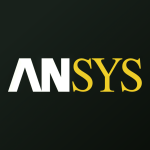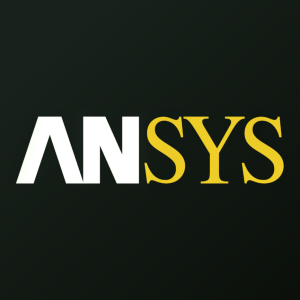Welcome to our dedicated page for Ansys news (Ticker: ANSS), a resource for investors and traders seeking the latest updates and insights on Ansys stock.
Ansys Inc. (NASDAQ: ANSS) delivers cutting-edge engineering simulation solutions powering innovation across aerospace, automotive, and semiconductor industries. This dedicated news hub provides investors and engineering professionals with essential updates on the company's strategic developments.
Track critical announcements including quarterly earnings, product launches for multiphysics simulation tools, and partnerships advancing digital twin technologies. Access verified information about Ansys' R&D initiatives in computational fluid dynamics (CFD) and cloud-based simulation platforms that shape industry standards.
Our curated collection features official press releases alongside analysis of major acquisitions and leadership updates. Stay informed about innovations in electric vehicle simulation systems and semiconductor design validation tools that demonstrate Ansys' technical leadership.
Bookmark this page for real-time updates on ANSYS's market-moving developments and in-depth coverage of how its simulation software enables next-generation engineering breakthroughs worldwide.
Ansys (NASDAQ: ANSS) has announced it will release its first quarter 2025 earnings report on Wednesday, April 30, 2025, after market close. Due to the pending acquisition by Synopsys, Ansys has suspended quarterly earnings calls and guidance. The earnings release and 10-Q filing will be available on the company's investor relations website.
The previously announced acquisition by Synopsys, agreed upon on January 15, 2024, is expected to close in the first half of 2025, subject to regulatory approvals and closing conditions. The merger aims to combine Synopsys' semiconductor electronic design automation capabilities with Ansys' simulation and analysis portfolio to create a comprehensive silicon to systems design solutions provider.
Ansys (NASDAQ: ANSS) announced that its PathFinder-SC has been certified as a new ESD analysis solution for TSMC's N2 process technology. The solution provides enhanced capacity and performance for cloud-based large-scale design verification.
The certification includes multiple Ansys solutions running on distributed cloud services: SeaScape cloud-optimized platform (including RedHawk-SC, PathFinder-SC, RedHawk-SC Electrothermal), and Totem. These tools ensure protection against electrical overstress in complex semiconductor designs for AI, HPC, 5G, automotive, memory, and GPU applications.
This collaboration with TSMC aims to provide customers with reliable verification solutions that maximize performance and power efficiency in advanced process technologies, particularly as chip sizes continue to increase.
Ansys (NASDAQ: ANSS) has achieved a breakthrough in computational fluid dynamics (CFD) simulation through a collaboration with Baker Hughes and Oak Ridge National Laboratory. Using 1,024 AMD Instinct MI250X GPUs on the Frontier exascale supercomputer, they successfully ran the largest commercial Fluent CFD simulation, solving a 2.2-billion-cell axial turbine simulation.
The groundbreaking achievement resulted in a 96% reduction in simulation run time, cutting it from 38.5 hours (using 3,700 CPU cores) to just 1.5 hours. This advancement enables faster design iterations and more accurate predictions for developing sustainable technologies and products. The improved Fluent GPU solver also benefits small and medium-sized businesses by providing access to high-fidelity simulations without requiring exascale resources.
Ansys (NASDAQ: ANSS) announces the certification of four photonic solvers for GlobalFoundries' GF Fotonix™ platform, enhancing the design capabilities for photonic integrated circuits (PICs). The certified solutions include Ansys Lumerical FDTD™, MODE™, CHARGE™, and HEAT™ solvers.
The GF Fotonix platform stands out as the only commercially available foundry platform offering monolithic integration of photonic and electronic components. The certification enables simulation of both passive and active photonic components, validated against real measurement data, supporting the development of high-capacity chips for generative AI, autonomous vehicles, hyperscale data centers, and IoT applications.
The platform features active devices like Mach Zehnder and Micro-ring modulators, Germanium photodiodes, and various passive components, addressing high-bandwidth, low-latency data transmission, and low power consumption requirements.
Ansys (NASDAQ: ANSS) announced the integration of NVIDIA Omniverse features into select products, starting with Fluent fluid simulation software and AVxcelerate Sensors autonomous vehicle sensors in Q3 2025. The integration will enhance data processing and visualization capabilities, enabling users to view simulation data in photorealistic digital environments.
The collaboration aims to streamline simulation processes by automating data preparation and enabling high-fidelity models. By leveraging Omniverse technologies, Ansys software will facilitate interoperability, scalability, and modularity of 3D scene data. Users can render immersive, photorealistic models within the Ansys interface, supporting real-time collaboration and improving results communication.
The integration will benefit various industries including automotive, aerospace, electronics, healthcare, and energy. Astec Industries, a manufacturer of specialized equipment, is already using this integration to visualize complex physics simulations for optimizing their asphalt drum dryers and hydrogen burners designs.
Ansys (NASDAQ: ANSS) has announced a breakthrough in aerodynamics simulations through collaboration with Volvo Cars and NVIDIA. The partnership achieved a significant 2.5X acceleration in computational fluid dynamics (CFD) simulations using eight NVIDIA Blackwell GPUs compared to 2,016 CPU cores.
The enhanced simulation process reduced total runtime from 24 hours to 6.5 hours, with meshing taking one hour and solving taking 5.5 hours. This advancement enables multiple design iterations per day for battery electric vehicles (BEVs), particularly benefiting the development of Volvo's fully electric EX90.
The technology combination helps Volvo Cars optimize aerodynamic drag reduction, important for improving EV range and meeting Worldwide Harmonized Light Vehicles Test Procedure (WLTP) requirements. The breakthrough demonstrates how GPU-accelerated simulation can accelerate product development and innovation across automotive, aerospace, motorsports, and consumer electronics industries.
Ansys (NASDAQ: ANSS) and NVIDIA have unveiled a groundbreaking technology framework that combines AI, advanced simulation, and visualization capabilities. The collaboration introduces PyAnsys-Heart, an open-source Python library enabling detailed heart model simulations in LS-DYNA software.
The framework utilizes NVIDIA NIM microservices for AI-based speech-to-text code generation and integrates with NVIDIA Omniverse for photorealistic visualization. A key feature is a chatbot interface that allows clinicians to generate patient-specific heart models, making complex simulations accessible to non-experts.
Additionally, Ansys announced plans to support NVIDIA's Isaac for Healthcare AI robotics platform, focusing on multi-scale physics and physiology simulation tools. The technology will be demonstrated at NVIDIA GTC in San Jose, March 18-21, 2025, showcasing its potential in revolutionizing cardiovascular research and treatment planning.
Ansys (NASDAQ: ANSS) reported strong Q4 2024 financial results with revenue of $882.2 million, up 10% year-over-year, and full-year 2024 revenue of $2,544.8 million, representing 12% growth. The company achieved Q4 GAAP EPS of $3.21 and non-GAAP EPS of $4.44, while full-year GAAP EPS reached $6.55 and non-GAAP EPS hit $10.91.
Q4 2024 Annual Contract Value (ACV) grew 15% to $1,094.6 million, contributing 43% of the full-year ACV of $2,563.0 million. The company maintained strong operating margins with Q4 GAAP operating profit margin at 40.3% and non-GAAP at 53.3%. Operating cash flows for Q4 were $258.0 million, with full-year operating cash flows at $795.7 million.
The previously announced acquisition by Synopsys is progressing with regulatory approvals, including conditional clearance from the European Commission and provisional acceptance from the UK Competition Authority. The transaction is expected to close in the first half of 2025.
Ansys (NASDAQ: ANSS) and Concepts NREC have expanded their partnership to integrate Ansys CFX® computational fluid dynamics software into Concepts NREC's AxCent® platform, creating an automated workflow for turbomachinery design and analysis. This integration enables designers to evaluate machine performance with increased predictive accuracy directly within the same interface, eliminating manual data transfer between programs.
The new 'one-click' approach significantly reduces design cycles and improves performance for applications including compressors, turbines, pumps, fans, and turbochargers. The partnership addresses traditional workflow inefficiencies that caused time delays, required additional computational resources, and increased production costs.
AtmosZero, a manufacturer of zero-emission steam boilers, has already implemented this integrated solution for designing and validating high-temperature compressors. The companies plan to expand integration capabilities to include more fluid varieties and features for capturing system dynamic behavior.
Ansys (NASDAQ: ANSS) has released its 2025 R1 update, introducing significant enhancements to its digital engineering technologies. The release features expanded AI and cloud computing capabilities, including improvements to SimAI for enhanced post-processing insights and new GPU-powered solutions.
Key improvements include the new CFD HPC Ultimate product for enterprise-level computational fluid dynamics, support for SysML v2 in System Architecture Modeler, and significant performance boosts across various platforms. The Fluent multi-GPU solver now handles larger mesh cell counts, while Mechanical GPU-accelerated solver achieves up to 6x faster performance than alternatives.
The update also introduces PowerX, a new tool for power FET and PMIC analysis, and enhances the Minerva simulation process with improved data management capabilities. These improvements aim to accelerate product development, reduce costs, and facilitate better cross-team collaboration.


